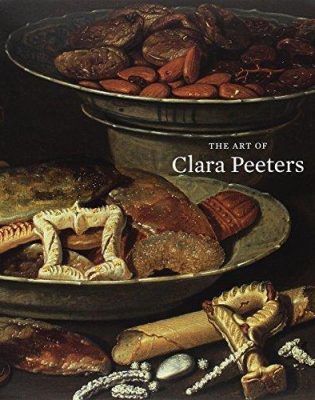The Art of Clara Peeters was an especially welcome exhibition shown at the Rockoxhuis in Antwerp and the Museo Nacional del Prado in Madrid not only because of the attraction generally held by still-life paintings but also because of the relative unfamiliarity with this seventeenth-century female artist. This was the Prado’s first monographic exhibition devoted to a woman artist. We have no information about Peeters’s life and training. The Antwerp documents once believed to refer to Clara Peeters describing a baptism (1594), travel to Amsterdam and The Hague (1612 and 1617), and a marriage (1637) cannot be validated or are thought to belong to another person. Most modern scholars believe she was born between 1588-90. Her name is missing from guild records in Antwerp and the Netherlands (which do include other women artists). Although her work does not appear in the records of Flemish collectors, it does appear in three collections in Holland and one in Spain. In spite of this lack of information, Peeters is recognized as a successful woman painter, one of the earliest still-life artists and a pioneer in paintings of fish and game.
Knowledge of Peeters exists in the form of forty paintings, eleven of which are dated (1607 to 1621). Nearly all of Peeters’s paintings are still lifes, a field of specialization that was available to women who did not have access to the study of anatomy. Peeters proudly announces her authorship by signing thirty-nine paintings and including tiny self-portraits on the shiny objects in eight of them. Although the location of her studio is unknown, analysis of her subjects, style and the makers’ marks on six of her painted surfaces and on the silver knives in some of her paintings place her in Antwerp. Most of her images contain expensive items and foods that reflect a wealthy society and her paintings of hunting birds and their prey allude to a pastime restricted to nobility after 1613.
The Prado exhibit featured fifteen of Peeters’s paintings (all signed, five dated) and the catalogue discusses seven additional works attributed to her (six signed, two dated). Alejandro Vergara, the Prado’s Chief Curator of Flemish and Northern School painting, divides the artist’s paintings into three tiers which could imply the existence of a workshop: (1) authentic/better works; (2) works in which adjustments to objects used repeatedly in a number of still lifes are less carefully concealed and forms are more generalized; (3) works made in imitation of Peeters but where the faults of the second tier are more amplified, suggesting they were made without her supervision.
Generally conveying a realistic appearance of the birds and objects in her still lifes, such realism is in fact deceiving. An example is presented in Peregrine Falcon and Prey (Antwerp, private collection; cat. no. 6), which has been relegated to the second tier. It shows a falcon standing on a dead partridge with other dead birds of prey in a basket and on the table. According to Vergara, the painting displays Peeters’s involvement but is not entirely executed by her. Details such as the falcon’s feet are less realistically drawn than in other works by the artist. Moreover, the schematic rendering of the streaky front of the falcon and of the body, neck and head of the partridge that forms a continuous curve suggest that the artist worked from painted models and was not familiar with the actual appearance of the birds. The otherwise unknown Nicolaes Cave by whom one signed painting exists is mentioned as a possible assistant or a collaborator in her workshop.
This interpretation is debatable. Cave did not originate this mannered pose and its appearance in the Antwerp Peregrine Falcon and Prey is no proof that he painted parts of this work. The same pose is found in the works of the much more famous Antwerp still-life painter Frans Snyders, such as Still Life with Hunting Game, Vegetables and Fruit (signed and dated 1613, Adam Williams Fine Art Ltd., New York City), and Still Life with Game and Fruits (Rijksmuseum, Amsterdam). Not enough is known about Nicolaes Cave to establish his role in Peeters’s paintings. He is mentioned in the Antwerp guild records from 1619 to 1651 and he signed a version of a game painting described as “a falcon sitting on the edge of a basket full of small dead birds” (according to Schlichte Bergen, Amsterdam 1993). This work is similar but not identical to fig. 6.2 in the Prado catalogue, Peregrine Falcon Perched on a Dead Partridge with a Basket with Dead Birds (F. Devaux, Brussels 2008; see RKD database image no. 54614). Another version was sold by the Lempertz Gallery, Cologne in 2009 (see RKD image no. 199120). These are his only known works and they merely illustrate that he emulated Peeters’s paintings.
Clara Peeters’s paintings of flowers, fruit, fish and game were very popular, influencing influenced many artists. The exhibition and its catalogue will encourage future research on the work of this pioneering female artist, hopefully locating new paintings and information on her life and career.
Pamela Hibbs Decoteau, emerita
Southern Illinois University Edwardsville
